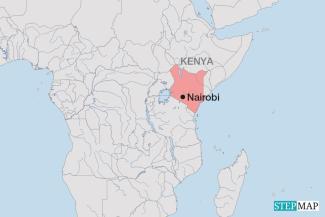Kenia
Gegen die Massenpflanzung von Eukalyptusbäumen
 StepMap
StepMap
Eukalyptusbäume sind in Kenia ein alltäglicher Anblick. Viele Bauern pflanzen sie entlang von Flüssen und anderen Gewässern an. Sie wachsen schnell und liefern hochwertiges Holz. Aus ihnen werden verschiedene Produkte wie Möbel, Holzkohle oder Strommasten gefertigt.
Jedoch ist der Eukalyptusbaum als ziemlich „durstig“ bekannt und verbraucht viel Wasser. Das Austrocknen einiger Flüsse wurde auf die vielen Eukalyptusbäume entlang der Ufer zurückgeführt. Das kenianische Parlament strebt ein Verbot des Eukalyptusanbaus entlang von Flussufern, Seen oder sumpfigen Gebieten an, um die Umwelt vor Schäden zu bewahren.
Umweltschützer loben das Parlament für diesen Schritt und betrachten ihn als notwendige Maßnahme zur Eindämmung des Klimawandels. Das ostafrikanische Land erholt sich gerade von einer vier Jahre andauernden Dürre und massiven Überschwemmungen. Der kenianische Senator Kamau Murango setzt sich vehement gegen Eukalyptusbäume ein, die „während ihres Wachstums große Mengen an Wasser benötigen und über tiefe Wurzelsysteme verfügen, die dem Boden schnell Wasser entziehen“.
Eukalyptus wurde im 19. Jahrhundert von britischen Kolonialisten nach Kenia gebracht. Obwohl die nationale Umweltbehörde den Anbau der Pflanze innerhalb von 30 Metern von Ufergebieten verbietet, wird diese Vorschrift vielerorts nicht eingehalten.
Es gibt Alternativen zum Anbau von Eukalyptus, etwa den weniger durstigen und dennoch rentablen Bambus. „Bambusbäume brauchen nur sehr wenig Dünger und Zeit, um zu wachsen, und sie erzeugen auch weniger Abfall. Ihre Nebenprodukte können zu sehr schönen Möbeln und anderen Gegenständen für verschiedene Zwecke verarbeitet werden, die viel Geld wert sind und eine Einnahmequelle für Tischler darstellen“, sagt Benjamin Mutinda vom Kenya Forestry Research Institute (KEFRI).
Der Vorstoß der kenianischen Zentralregierung wird von den Regionalregierungen unterstützt. Im Bomet County wurde eine intensive Debatte zu diesem Thema geführt. Das Regionalparlament versucht, mehr Kontrolle über den Anbau zu gewinnen, und sensibilisiert die Bevölkerung über die Nachteile der Anpflanzung von Eukalyptus in Uferzonen.
Ein Gesetz gegen den Anbau wird wahrscheinlich auf Widerstand und Skepsis von Interessengruppen stoßen. Im besten Fall wird es aber die Landwirte dazu bringen, nach Alternativen zu suchen.
Joseph Maina ist freier Autor aus Naivasha, Kenia.
mainajoseph166@gmail.com
